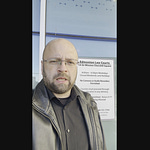VIDEO - Organ harvesting: "Brain death is a lie" - Dr.Paul Byrne (founder of perinatal medicine)
Dr. Paul Byrne: From preemies to end-of-life issues, one man has made a difference
Dr. Byrne is no stranger to death-and-dying issues and the challenges posed by both preemies and babies with congenital illnesses. In 1963, he established the neonatal intensive care unit at Cardinal Glennon Children’s Hospital in St. Louis. Though he no longer makes hospital rounds, he stays very, very busy working on behalf of the preborn, sick newborns, the disabled, the elderly, and people with illnesses deemed “terminal.”
“Not only do we have a culture of death in our society—it is a System of Death,” Dr. Byrne says. “We have to work hard to protect life from its beginning until true death. That’s why Life Guardian Foundation was founded.”
“I retired a few years ago after practicing medicine for 55 years,” Dr. Byrne adds. “Yet, instead of a retirement party, I asked my family to have a ‘redirection party.’ My work has not stopped—in fact, I’m busier than ever! People have a way of finding out that I can help them in the cause for life and in their own difficult situations.”
Small beginnings
To get a sense of how Dr. Byrne’s passion for saving lives all began, it’s helpful to go back to the very beginning, when he was a young doctor practicing at Cardinal Glennon Children’s Hospital in the mid- 1960s. There, Dr. Byrne established the hospital’s very first special care nursery for at-risk infants.
“Back then, there were no treatments for preemies and low-birthweight babies, the kinds of things we take for granted today,” he recalls. “I went to the administrator at Cardinal Glennon with the idea of creating a center where we could find ways to treat these babies. She said, ‘OK, let’s try it for a year.’”
After that first year, Dr. Byrne’s efforts had saved the lives of 30 babies. “How?” you might ask. For starters, he partnered with engineers working nearby on the space pro-gram. They had developed a plastic cuff to fit around the fingers of astronauts, enabling their blood pressure to be monitored during space missions. Together, they developed a spinoff that fit around the arm of a tiny baby: Before this invention, there was no way to monitor a baby’s blood pressure.
Dr. Byrne and his team also pioneered new techniques for feeding these babies intravenously as well as specially designed ventilators to augment their respiratory function. All were instrumental in helping such infants survive. Since preemies are so small, new, highly sensitive measurement protocols were also necessary to track their health.
“For instance, premature infants have very small total quantities of blood,” Dr. Byrne notes. “That required development of micro techniques to analyze blood for indicators of health or disease. These micro-techniques that were developed for sick babies are used for everyone. It was exciting for me to be able to participate in the development of what was then a brand-new field.”
Signs of life
It was also heartening for him to witness babies who had been deemed hopeless develop into healthy children and adults. The birth of Joseph in 1975—at a mere 24 weeks’ gestation— was one such miracle. “He had a flat electroencephalogram or EEG—in other words, no brainwaves,” Dr. Byrne recalls.
The EEG is a common method of measuring brain activity at any age. The flat EEG of Joseph was interpreted as “consistent with cerebral death.” “Nonetheless, Joseph went on to be a straight-A student in school, build a brilliant career, and he’s now married and the father of three kids.”
While considered breakthroughs in their day, many of these developments are now commonplace in both neonatal intensive care units and medical care as a whole. Plastic cuffs are routinely used to measure blood pressure of patients.
“My medical philosophy is that the best doctors are the ones who work the hardest on the people who are the sickest,” he says. “What you try to accomplish for those sickest people first will ultimately have a beneficial impact on the rest of humanity.”
Darker trends
During the early 1970s, Dr. Byrne witnessed a trend he found troubling: the increased acceptance of brainwave cessation as a legally acceptable marker of death. This occurred even before abortion became legally available in most states, and it owed in part to new ways to artificially resuscitate patients to keep a person’s heart beating with circulation and respiration. It also followed the world’s first heart transplant in 1967, after which organ transplants became common practice in a short amount of time.
“The push to accept ‘brain death’ has a lot do with the concurrent push for viable organs for transplants,” says Dr. Byrne. He noted that, following that first heart transplant, the medical community began lobbying elected officials for new laws that first codified “brain death” in the US.
This had practical reasons. Dr. Byrne points out that to transplant a heart or a liver, the donor’s heart, circulation and respiratory processes must be kept functioning for healthy vital organs to be removed. Organs from a cadaver are useless, he notes, because organs begin to decompose immediately after those functions cease.
“Now, when someone suffers a head injury or is deeply unconscious, there is a shift of emphasis from helping that patient to harvesting his or her organs for transplantation,” he says. The fact that viable organs are very valuable to the organ transplant industry can add a monetary incentive to the push to declare patients legally dead.
Forty-seven US states have passed the Uniform Anatomical Gift Act (UAGA) that presumes everyone is an organ donor. This is in addition to those who have willingly registered as organ donors on their drivers’ licenses. This often creates a conflict, when the same individuals have also filed advance DNR (do not resuscitate) directives. In such situations, that previous DNR order will be overruled and the patient will be resuscitated in order for their vital organs to be usable for transplantation.














Share this post